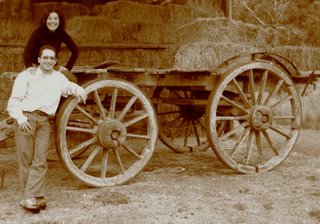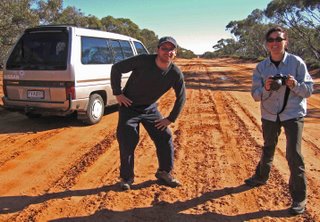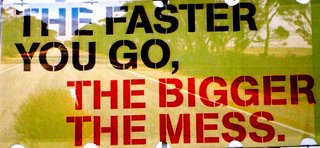The woman and the man dreamed that God was dreaming about them. Eduardo Galeano Photos and Text by/ Hugo Ernesto Otalora
miércoles, octubre 25, 2006
Crying for Money
Colombians are quick to react, brisk to discuss, cautious to decide and excessively slow to make collective decisions. Maybe that’s why some colombians decide to cry for the rest.
This is a video that shows one of the most bizarre professions. This is a guy who decides to cry for others, and believed or not Colombians pay for that.
Vallenateando
Next to Cumbia, Vallenato constitutes one of the most important native musical styles coming from Colombia. The roots of Vallenato lie with the music of the Wayuu Indians of the Güajira peninsula of Northern Colombia, in fusion with diverse African and Caribbean influences.
Vallenato acquired its current form to be a music for the transmission of folk and love stories, a music for celebration and serenades, in the traditions of the Spanish troubadours.
Show me how to play accordion compae
It is estimated that a century after the invention of the accordion in 1829, Europeans introduced the German Hohner accordion to the northern coast of Colombia where it was primarily used to play European music. Fortunately, the famous German instrument, now most commonly known as the acordeón vallenato, found its way to Valle de Upar where it was adopted as part of the vallenato folklore
Within the vallenato music and folklore there are basically four rhythm styles: puya, merengue, son and paseo . The son and paseo have the slowest tempo of the four styles but the paseo is perhaps the most popular or most commercially marketable music. But if you want to show your skills , you have to play The Puya that is the fastest rhythm to interpretate.
Playing to Petrona
Barbatuques is a Brazilian body percussion group, that uses their body as an instrument. In this video they are playing to Petrona Martinez.
Petrona is one of the most authentic Afro-American voices of the Caribbean. She possesses a vibrantly colorful voice and an innate passion for rhythm. Hailing from Colombia, Petrona is the heiress to a long tradition of bullerengue singers including her mother, grandmother and aunts
The Guabina
The Colombian Andean music has been strongly influenced by Spanish rhythms and instruments, and differs noticeably from the Indian music of Peru or Bolivia. Among the typical forms are the bambuco, pasillo guabina and torbellino, played with string instruments like tiple guitarra, and also with piano.
Colombian Bambuco
Dancing Torbellino
Dance and song representative of the departments of Boyacá, Cundinamarca and Santander. Rhythm used in the pilgrimages, fairs, festivals. With the melody the peasants express in simple terms their religious feelings, their loves, or sometimes the description of the landscape.
A French Band Playing Modern Cumbia
Modern cumbia includes instrumental mixing; guitars, accordions, bass guitar, modern flutes and modern deep-toned drums and other percussions. The basic rhythm structure is 4/4. Cumbia is the net intersection of two cultures that settled in the region of what is now northern Colombia at different times; the Amerindians and African slaves. Cumbia began as a courtship dance practiced among the slave population that was later mixed with the European instruments and influence.
Colombian Rodeo
Vast extensions from the foothills of the eastern cordillera to the Venezuelan border are named The LLanos Orientales. Thousands of kilometres covered by natural grass with frecuent spots of 'bosques de galeria' bush gallery , rice plantations and impresive fauna.
The musical traditions of the Llanos are among the richest and most diverse in Latin America in this video you will find the real life of the llaneros, their music and their identity.
We don't want to forget the traditions
The Darién Gap is a large swath of undeveloped swampland and forest separating Panama and Colombia,The entire Darién Gap is largely under the control of three Colombian rebel groups. These include the United Self-Defense Forces of Colombia (AUC), a right-wing paramilitary group ; the National Liberation Army (ELN); and the Revolutionary Armed Forces of Colombia (FARC). The region is a mixture of conflict, poverty and music to survive.
This is a video about afro colombian traditions in one of the most pristines and isolated areas of the country.
BULLERENGUES are very popular in the State of Bolivar with its largely African tradition. Over the generations bullerengue became part of daily life and the celebrations. The Bullerengue
is a variant of the Cumbia,with agitated gestures, in which the women carry the compass with the palm of the hands.
BUNDE is one of the rythms of the Pacific Coast, of African origin. In the Andean folklor it is known as the “bunde tolimense”, like a mixture of rhythms (guabina, torbellino, bambuco)
Something to think about the country
This is no my music but I think there are some good images and ideas in this video.
what is your opinion?
Soccer is our religion?
Since soccer has great influence over people’s social lives, it is no exaggeration to say that many people in Colombia and the rest of the world call soccer their “religion”. Like religion, soccer cannot escape the fanaticism of its supporters.
However the only religion for most is the worship of money, and that's not new at all.
Colombia?
Looks more like an add for a multinational. We are not like Coca-cola however we need some tourist to improve the image of the country.
This is Vallenato
Nevertheless Carlos Vives has made a big contribution to the diffusion of Vallenato over the world.
Carlos Vives is a singer, guitarist and composer. He began performing a local style known as Vallenato, successfully touring his native country and South America. In 1994, Carlos Vives' "La Gota Fria," became his first hit, climbing on the most important music charts around Latin America and Spain.
This song is about our traditions, our landscape and people
This video was shooted at La Sierra Nevada de Santa Martha. This one of the most diverse areas in the country.
This is the land of the Arhuacos, an agrarian tribe whose nation stretches across the thick forests and fertile valleys of these mountains of northern Colombia. a tribe of 18,000 people.The Arhuacos operates schools where the ancestral tongue is taught. They hold religious rituals in forest clearings, giving thanks to the creators of the divine mountains and rivers of the range where they live, the Sierra Nevada de Santa Marta.
But also this is the land of the costenos and the mestizos. The video shows how important is the music to enjoy life
Vallenato is one of the most typical music of Colombia, in which the accordion plays the most important role. Of course, the accordion is not Colombian but German, but it was quickly integrated with the music of the country.
Are we living in a materialistic World?
How little we really need to be happy?
A mass advertising culture creates consumers who are perpetually unsatisfied, restless, anxious, and bored.
martes, octubre 24, 2006
El Album- New eyes to see my country
The real voyage of discovery lies not in seeking new landscapes, but in having new eyes - Marcel Proust
I love photography because it is not my job. As long as I keep it that way, I will continue to love it. It is my escape to creative indulgence, good or bad.
There's an alternately ethereal and electric power pulsing music from Colombia.This is the Colombian duo Aterciopelados. The members are the vocalist-guitarist Andrea Echeverri and the bassist Hector Buitrago. They have rooted their sound in traditional rhythms while deftly dipping it in some of today's most exciting genres.
If you love photography this is the video to see
Images are the shock absobers
Shock Absorber
The mechanical romance between you and I
Automatically struck up two sparks
You advise me, you are my steering wheel
You stimulate my accelerator
Mmmm
Hug me like a safety belt
Protect me, liberate me from everything bad
Mmmm
You you you you you you are my shock absorber
The mechanical romance between you and I
The best upkeep of my engine
Gas makes combustion
And goes through my carburetor
Mmmmmm
Hold me
You you you you you you are my shock absorber
You you you you you hold back the world, the pain
You defend me when someone hurts me, my shock absorber
You smooth-out cruel situations, my shock absorber
Imagine to be in the middle of the black market in Bogota city.
Colombian's are surrounded by kitch images where religion and superstition are the protectors. We have to believe in something in order to survive
Images are our faith our soul and our hopes.
Damaquiel
If you want to know about Colombian folklore and traditions,this is a good beginning.
Colombian Music is a combination of african, european and indigenous music.
How can we Colombians remain optimistic and happy when our nation is not only suffering from grinding poverty but also from unceasing political turmoil, unabated graft and corruption and environmental destruction?
Maybe Music is the answer. In Colombia music is a kind of tool against oppression and injustice
miércoles, septiembre 27, 2006
Dealing with souls

Theology of liberation is the name of a movement that arose in the churches in Latin America during the last third of the twentieth century. It also described a theological trend that is found, sometimes under different emphases, across the world. The movement denounced the systematic oppression of the poor, critized the exploitation of the third world by industrialized nations , and called for political and social reform.
In 1971 father Gustavo Gutierrez a Peruvian theologian published the principles of the movement are as follows.
First, theology is critical reflection on Christian praxis. Faith, charity, and commitment to God and others in the struggle for humanity and justice are primary. Theology relates this praxis to the sources of revelation and the history of the church.
Second, biblical revelation commits the church to God’s “preferential option for the poor.” The poor are by their condition, involved in a struggle to realize their humanity, to become “subjects of their own history,” against the political, economic and social powers that marginalize and oppress them. This struggle is revolutionary, not reformist. The church belongs with the poor in the midst of it, doing theology in a revolutionary situation. The poor deserve preference , not because they are morally or religiously better than others , but because Gd is God, in whose eyes “The last are the first”.
Third, the struggle of the poor for social justice is a work of human self creation that finds its source, meaning, and hope in God’s work. Political liberation is a partial salvific event, a historical realization of the kingdom that looks forward to its ultimate fulfilment by divine grace operating in the human struggle, in forming its character and directing it toward ever larger goals of human community.
For liberation theology , the agenda is set by the question of the non-person: ‘Our question is how to tell the non-person, the non human , that God is love and that this love makes us brothers and sisters’ the nonhuman.
One of the pioneers in the movement is the theologs Clodovis Boff, he critized the church history of tolerating, even contributing to, Latin American injustice, and strongly defended the morality of the class struggle in his book Jesus Christ Liberator Boff affirms that is possible to make ‘the utopia of absolute liberation’ a topia a place here and now. Chuch: Charism and Power contests the ‘institutional fossilisation’ of the centuries which has produced a hierarchical Church, oppressive and clerical, which cannot be amended by minor reform. The church have to be popular, the church arising from the people by the power of the Holy spirit.
More than a pair of wings

Running the distance,I meet great resistance To my desire I climb;Fly higher and higher
martes, agosto 01, 2006
Eastern Island
 Easter Island is over 2,000 miles from the nearest population center, (Tahiti and Chile), making it one of the most isolated places on Earth.There has been much controversy and confusion concerning the origins of the Easter Islanders. Thor Heyerdal proposed that the people who built the statues were of Peruvian descent, due to a similarity between Rapa Nui and Incan stonework. Some have suggested that Easter Island is the remnant of a lost continent, or the result of an extra-terrestrial influence.
Easter Island is over 2,000 miles from the nearest population center, (Tahiti and Chile), making it one of the most isolated places on Earth.There has been much controversy and confusion concerning the origins of the Easter Islanders. Thor Heyerdal proposed that the people who built the statues were of Peruvian descent, due to a similarity between Rapa Nui and Incan stonework. Some have suggested that Easter Island is the remnant of a lost continent, or the result of an extra-terrestrial influence. Rapa Nui’s ahu (shrines) vary in size and form. There are at least 360 on the island. "Image ahu" are those with statues (moai). The largest ahu are up to 200 feet [60 meters] long and 23 feet [7 meters] high. They have consistent features: a raised platform made of fitted stones and rubble, a ramp that is often paved with beach cobbles, and a leveled court in front. Image ahu had from one to 15 statues standing on each platform.
Rapa Nui’s ahu (shrines) vary in size and form. There are at least 360 on the island. "Image ahu" are those with statues (moai). The largest ahu are up to 200 feet [60 meters] long and 23 feet [7 meters] high. They have consistent features: a raised platform made of fitted stones and rubble, a ramp that is often paved with beach cobbles, and a leveled court in front. Image ahu had from one to 15 statues standing on each platform.Hugo, Coryne and the Moai
martes, julio 11, 2006
Places and Colours in Australia
 The changing leaves of autumn colored brightly red
The changing leaves of autumn colored brightly redOnly then we realize that life has changed so fast,Only then we realize that nothing ever lasts.Life goes through the seasons as the years accumulate,Many times we long for summer when it is too late.
James A. Kisner
 Poem of the Sea I dream of that moment when the waters of the ocean and the rocks of the cliffs finally meet
Poem of the Sea I dream of that moment when the waters of the ocean and the rocks of the cliffs finally meet
More from the Outback
Dear Heavenly Father, be with me I pray. Thank You for guarding me night and day.Thank You forYour peace that blankets me. As I travel the deserts, the forest, and sea. Help me to fulfill my mission without delay. Lead me and guide me each step of the way,That I may return safely to my friends and family. Thank You, dear Father for traveling with me.
There is a true yearning to respond to The singing Sky and the wise Rock.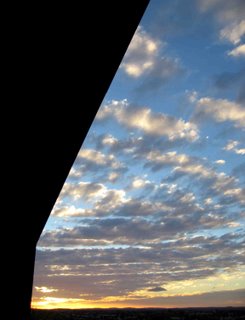 The Living Desert Nature Park
The Living Desert Nature Park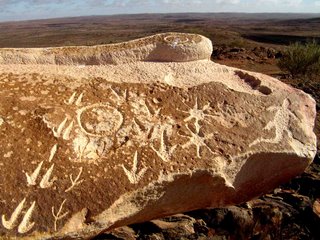
Mungo National Park A tree in the middle of the dune
 The countryside here looks like an inverted moonscape
The countryside here looks like an inverted moonscape
Outback Pictures

Mungo National Park
looking for something and I found it!

Silverton Popular destination for movie makers. This near-ghost is town full of interesting arts and craft shops
Once a thriving mining centre of 3000 Silverton is now a virtual ghost town of about 50 inhabitants with a number of historic buildings
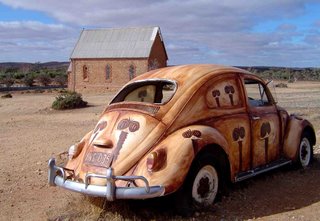 The Willandra Lakes World Heritage area, with Mungo National Park at its centre, maintains a continuous record of human occupation stretching back well over 40,000 years. Rain and wind has uncovered ancient fireplaces and hearths, as well as calcified plant matter, artefacts, stone tools and animal bones.
The Willandra Lakes World Heritage area, with Mungo National Park at its centre, maintains a continuous record of human occupation stretching back well over 40,000 years. Rain and wind has uncovered ancient fireplaces and hearths, as well as calcified plant matter, artefacts, stone tools and animal bones.
 Just outside Broken Hill in The Living Desert Nature Park is the best collection of sculptures this side of Stonehenge. Twelve sandstone obelisks, up to 3m (10 ft.) high and carved totemlike by artists from as far away as Georgia, Syria, Mexico, and the Tiwi Islands, make up the Sculpture Symposium.
Just outside Broken Hill in The Living Desert Nature Park is the best collection of sculptures this side of Stonehenge. Twelve sandstone obelisks, up to 3m (10 ft.) high and carved totemlike by artists from as far away as Georgia, Syria, Mexico, and the Tiwi Islands, make up the Sculpture Symposium.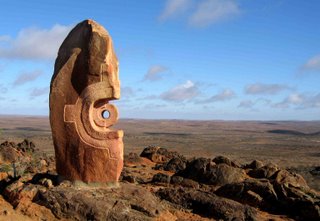
domingo, abril 30, 2006
Kosciuszko National Park in Australia
New Zealand Baby Live the Dream but Slow Down
Are you sure?
 Understanding the different types of sign and learning to recognise them can help you to drive safely and appropriately for the conditions.
Understanding the different types of sign and learning to recognise them can help you to drive safely and appropriately for the conditions. The road signs are designed to be understood quickly and easily
The road signs are designed to be understood quickly and easily
jueves, abril 27, 2006
Encantamientos

No llevan en sus pecho el peso de Dios, detenidos en un paraje silvestre con sus miradas resucitadas la soledad parece haberles dispuesto.
Las siluetas son comidas por las plantas.
Y tu mujer entras en contacto con el fuego, la visión hacia el vacío, no te consumen los hombres.
Otra ausencia deprime este lugar que espera .
Un caliz de sangre...alli se esconde el aroma entre la sombra y el deseo,
El horror de sus conciencias recuerda un homicidio,
Solo sus almas se queman en el pensamiento,
Un hombre dibuja con su mirada un punal,
La mujer abandona a los muertos ha entrado al mundo de los ausentes sin tumba , ha logrado fundir los frutos del tiempo.

No hay llanto , ni lamentos solo unos ojos que buscan desollar la tierra, solo unos cuerpos convertidos en cabezas,aquí no hacen falta nombres por que el frio viento es el eco.
Un bosque que respira ceremonias pasadas. Dispuestos seres sin cuerpo han creado un templo secreto. Y el resplandor aparece la inteligencia luminosa , la desnudez de la muerte y el sacrificio.
domingo, abril 23, 2006
Mother or Machine

Every day we are bombarded with the messages that quality of the natural world is deteriorating at an accelerating rate. For many this is a wake up call that we need to change how we think and act towards nature. Instead of treating nature as an infinite source of resources, we should develop a new set of attitudes towards nature. This is often summed up in slogans such as we need to develop a sustainable economy; we need to switch to green power away from high cost polluting sources of energy and that we should recycle many things. A second approach to dealing with our ecological crisis is to investigate our attitudes towards nature and try and understand what lies behind our indifference and lack of concern or rather why we say one thing (nature needs protection) but mostly do other things (go on exploiting nature).
In this essay I take this second approach and investigate some aspects of arguably the two most common ways of picturing nature. According to the first approach we treat nature as mother. This is usually positive (we thank our mothers for giving birth to us) but sometimes has a grim side to it (as when we blame our mothers for neglecting us). The second way of approaching nature is to treat it as a machine. We encounter this view at the doctors and dentists but it is also more widely made use of by developers and by governments. This is the view that nature can be controlled or should be and be developed and steered in certain directions as if it was a machine.

Let’s take the idea of nature as a mother. Nature as a mother is a complex ecosystem where is a web linking, animals, plants and other life forms in any particular environment. In Mother Nature everything hangs together in the ecosystem, to alter one part alter the others sooner or later. Humans are only one factor in the ecosystem but we don’t see it in that way. We set ourselves apart and call the other species natural resources or simply nature. Human survival depends upon preserving Mother Nature. It’s the frontier of existence, the framework of human activity. Mother Nature can do with us but we can’t do without the Mother Nature .
In mother nature, plants and animals use and pass on energy to each other in a continuous cycle. Only humans use nature as a machine, employ energy in a way that produces waste. We use energy in a straight line rather than a circle. Using fossil fuels to heat our homes and run our factories and cars creates dangerous waste products that cannot be used but must be disposed of. On the other hand Mother Nature nothing is wasted, the energy keeps getting used and passed on. Mother Nature has a spiritual value. Spiritual values have to do with feelings and memories .They have nothing to do with money. Everything in Mother Nature is priceless
Now I want to discuss the idea of nature as a machine. What difference emerges if we treat nature not as a mother but as a machine? How does the machine idea of nature influence and shape our attitude and behavior towards nature? I want to use some examples to explore this comparison.

One of the most common ways of using the nature as a machine concept is in relation to the economy. This is often also involves organic ideas as well. The economy for example ‘grows’ (as if it was a plant) but it is also said to expand and contract and sometimes overheat (as if it was a plastic or a metal). The nature as machine analogy becomes even more explicit in talk about ‘steering’ the economy. In this connection, the economy ceases to be something natural and instead becomes a car or some mechanical machine that can be steered, slowed down, and speeded up as when is needed. Similar thinking is also applied to cities. Is the city for example something that can be planned (a machine) or something that just grows in ways humans can only slightly affect (a force of nature). This example highlights the issue of how far humans can control the direction the world is going in. Can we manage the growth and expansion of cities however we wish or do they develop in defiance of planning?
Today consumption and economic growth have been progressively increasing more and more people have moved from the countryside to the city. Over half of all people throughout the world now live in the cities. The most caustic aspect of cities is the profound separation created between human beings and nature. In a human-made environment, surrounded by animals and plants of our choice, we feel ourselves to have escaped the limits of nature. Weather and climate invade on our lives with far less immediacy. Food is often highly processed and comes in packages, revealing little of its origins .We forget the source of our water and energy, the destination of our rubbish and our sewage. We forget that as biological beings we are dependent on clean air and water, uncontaminated soil and biodiversity as any other creature. Our powerful cities are more bubbles of technology and part of the big machine but we are far away from reality
A third example is the development of the Amazon basin that shows this contradictory attitude. For some the development of the Amazon is not development at all but vandalism. Huge areas have cleared of forest with the result that huge erosion has occurred, many species have been lost, Indians have lost their homes, and they had been absorbed in our “civilization” loosing their wisdom to protect Mother Nature, also the potential of the Amazon as a source of new medicines and natural discoveries has been massively reduced. But others would argue that clearing of the Amazonian forest has opened up the Amazon for new development such as new ranches and new towns. Forest clearing in other words has made the Amazonian land productive. But arguably this a consequence of turning the Amazon into a new machine. If the Amazon was regarded as a mother – a source of huge riches and a valuable place with rights of its own - then development might not have happened so readily and so destructively.
.
To feel Nature as a Mother we have to learn from the vast repositories of knowledge that still exist in traditional societies .This was suggested in a report in 1987 by the World commission on Environment and Development . Entitled Our Common Future, it acknowledges the inability of scientist to provide direction in managing natural resources and called for recognition of and greater respect for the wisdom inherent in traditional societies:
“Their very survival has depended upon their ecological awareness and adaptation…These communities are the repositories of vast accumulations of traditional knowledge and experience that links humanity with its ancient origins. Their disappearance is a loss for the larger society, which could learn a great deal from their traditional skills in sustainable managing very complex ecological systems. It is a terrible irony that as a formal development reaches more deeply into rainforest, deserts, and other isolated environments, it tends to destroy the only cultures that have proved able to survive in these environments.
So what can we conclude from the discussion so far? Treating nature as a machine generates visions of controlling, shaping, steering, manipulating and managing nature.
Through our loss of a worldview, our devotion to consumerism and our move into the cities and away from nature, we have lost our connection to the rest of the living planet. In a new century of explosive growth in science and technology it is fitting that leading members of the scientific community are starting to understand that science alone cannot fulfill humankind’s needs, indeed it has become a negative power. We need a new kind of science that approaches the traditional knowledge of indigenous communities around the world to respect Mother Nature. As we distance ourselves further from the natural world, we are increasingly surrounded by and dependent on our own inventions .We become enslaved by the constant demands of technology created to serve us. We are separated from the sources of our own existence from the skills of survival and from the realities of those who still live in rural areas.
Bibliography: The Sacred Balance /David Suzuki
Ecology for Beginners/Stephen Croall and William Rankin
The Death of Nature/Carolyn Merchant
You are the Earth/David Suzuki
